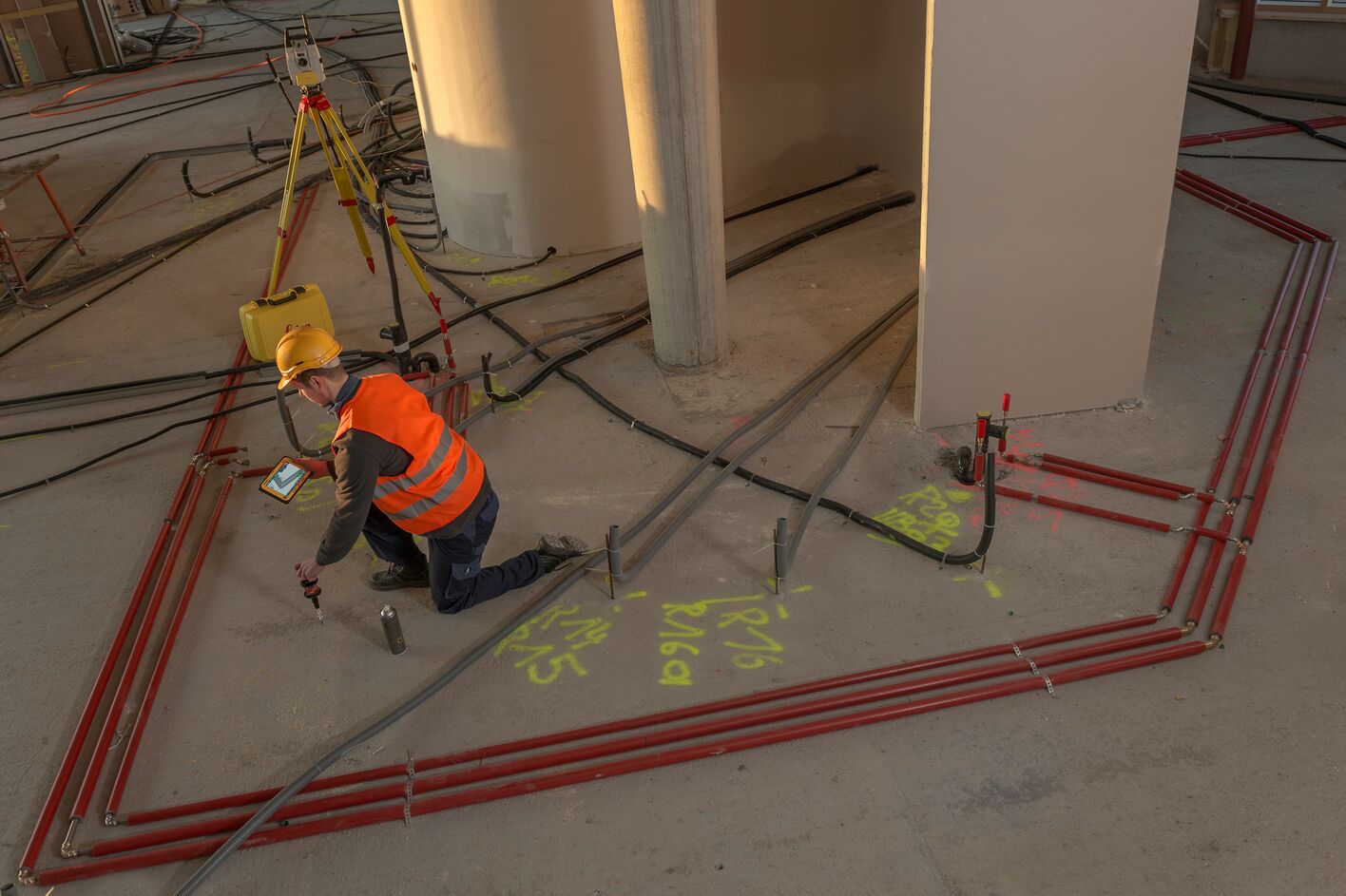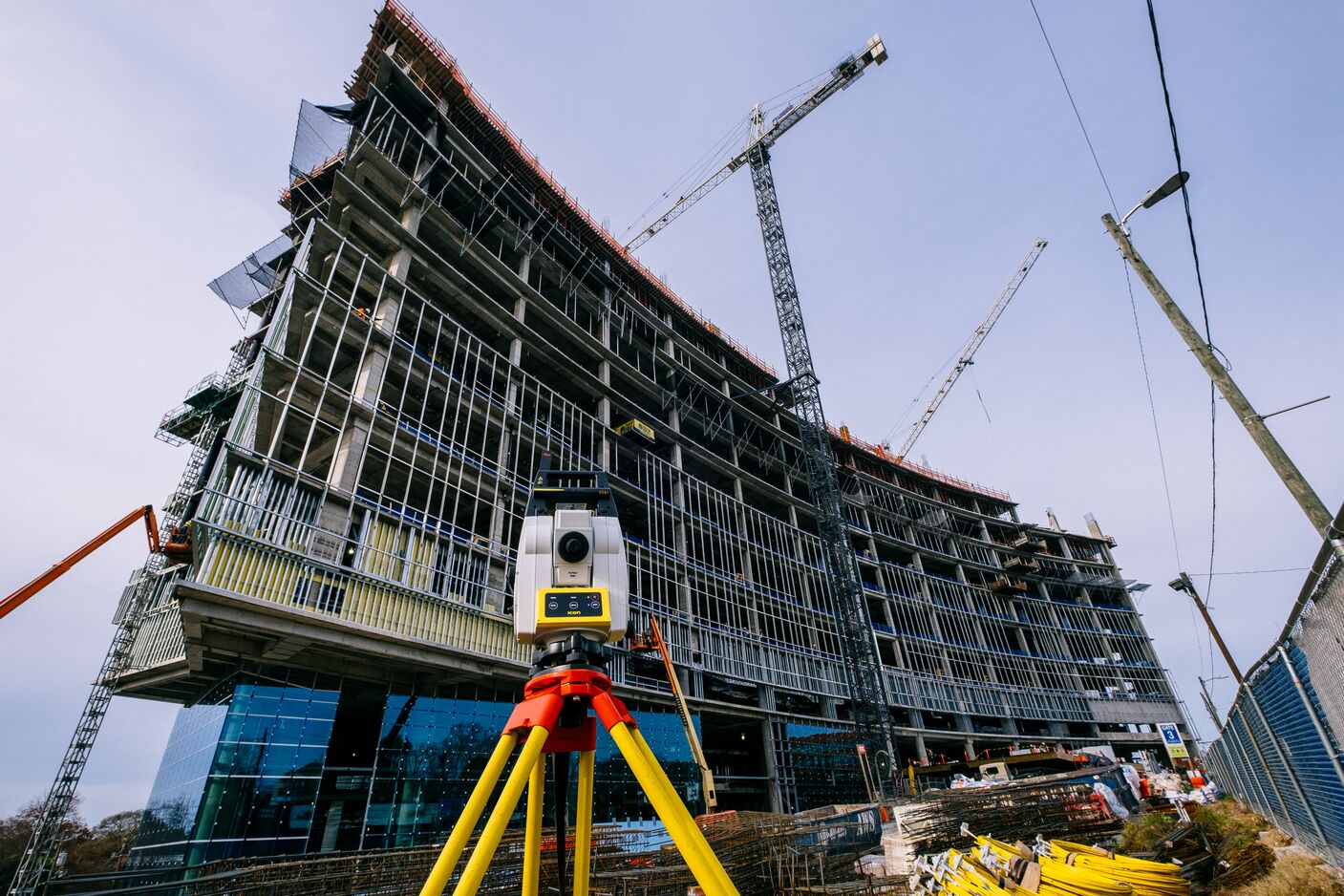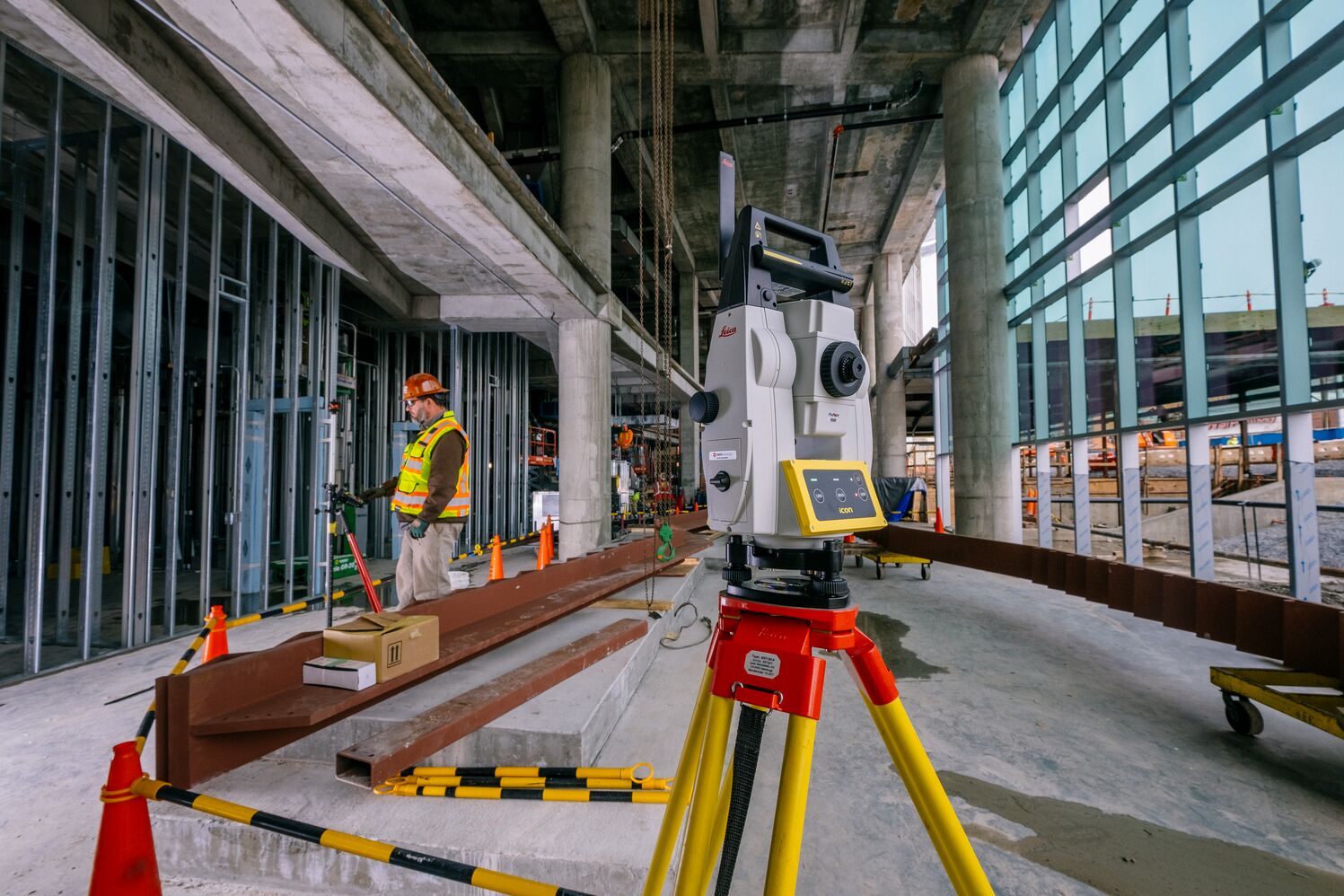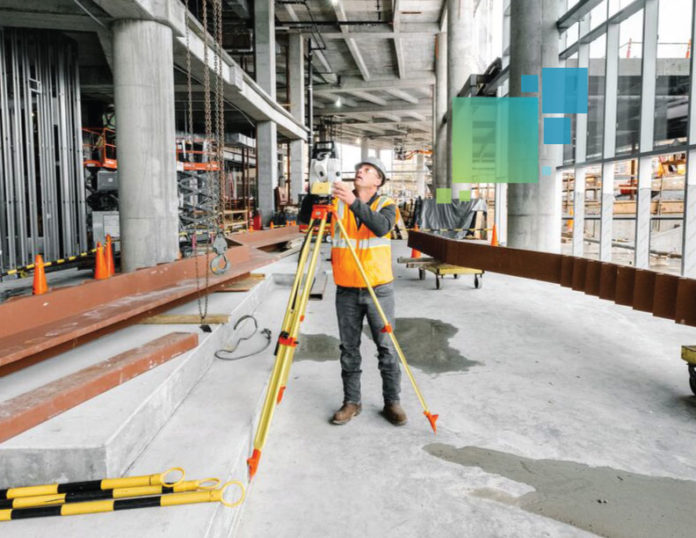As building construction becomes more digital and projects bigger, busier, and more complex, they require construction professionals to carry out a wider range of layout, as-built, and verification tasks than ever before. To ensure that these tasks are completed with speed and accuracy – while minimizing mistakes and unnecessary rework – they are increasingly using digital measuring tools such as total stations.
You might have begun using manual total stations to help start your digital construction journey. However, as building construction projects become more challenging, more advanced solutions are needed that bring smarter workflows and automation to overcome the productivity gap on site. Adding a Leica iCON robotic total station to the Leica iCON build field software enables field crews to complete their tasks with increased productivity and efficiency on projects and while remaining aligned to their digital construction processes.
What is a robotic total station solution?
The best way to answer this is to break it down into smaller pieces: the instrument or hardware; the software; and support & services.
Simply put, a robotic total station is a motorized theodolite with a laser distance meter that has direct communication to a tablet or controller. When we combine these elements together, this means that it can be operated remotely from distance by one operator and can complete far more calculations and updates than a manual total station. The Leica iCON portfolio is currently offering two different models of robotic total stations for construction; the iCR70 and the iCR80.
To ensure that you get the best return on your investment and the highest equipment utilization, a solution has to go beyond the box. Dedicated user training, and workflow optimization, are only a few examples of the support services that customers can utilize to improve their processes. Furthermore, connecting to a construction cloud service enables field crews to work with the most reliable and up-to-date design data that eliminates further the risk of mistakes. In the same way, mm accurate field reports can be delivered back to the office as soon as the tasks are complete, enabling much quicker decision-making and progress tracking.
![]() The Leica iCON build software is the key component of the solution. First and most importantly, it is a construction tailored software for field crews that enables them to work directly with the design data and perform the layout, as-built, and verification tasks precisely. Additionally, all the instructions and calculations happen in the background to ensure that these tasks are completed as easily and quickly as possible, making sure that the defined construction tolerances are met.
The Leica iCON build software is the key component of the solution. First and most importantly, it is a construction tailored software for field crews that enables them to work directly with the design data and perform the layout, as-built, and verification tasks precisely. Additionally, all the instructions and calculations happen in the background to ensure that these tasks are completed as easily and quickly as possible, making sure that the defined construction tolerances are met.
As the iCON manual total stations have the same iCON build software, the valid question of “What really makes the difference?” might arise. As robotic total stations are motorized, this enables them to turn automatically and have advanced features that are enabled by the software that are not available in the manual total stations. Some of the most significant ones are the Dynamic Lock and Auto Stake.
In busy construction sites where constant obstructions can cause an instrument to stop tracking the target (prism), Dynamic Lock anticipates your position and immediately starts searching for the prism and automatically relocks as soon it is found. That minimizes the need to initiate a prism search when you temporarily lose sight to the total station.
The Auto Stake functionality, from the other side, is most suitable for tasks such as hanger installations and wall penetrations as it automatically turns the laser beam and guides you to the next point you need to work on, eliminating the need to return to the instrument to aim to the layout points. For automatic grid measurements and verification routines for as-builts, you simply define the area and the robotic total stations will do all the measurements alone until the task is complete.

When is it time to step up from a manual total station or tapes and strings?
Large Projects
When construction projects become bigger, then they also become busier, but the scheduling and time constraints are also often much tighter. Here, a versatile robotic total station like the Leica iCON iCR80 makes laying out each point faster, with minimal interruptions and the time savings become considerable.
“Thanks to this new solution, our layout specialists can layout faster and therefore have more time to ask questions and be more confident about what they are doing. This has helped to increase the efficiency within the team as they can complete their tasks quicker and with less stress” explains Philippe Richard, Productivity and Ergonomy R&D Director at Bouygues as they worked on a 23,000 sqm documentary facility project.

Complex Layouts
From architectural designs to highly complex MEP and HVAC installations, our buildings are becoming more complex all the time. This is where a robotic solution helps overcome these challenges with automation and smart workflows to enable you to complete the tasks you need to do each day. Large and complex building designs is what lead V Construction company in Melbourne, Australia, to adopt robotic total stations for a very special project that, was easy to see that with traditional methods, would take significantly more time and resources to complete.
Douglas Thirkell, one of the construction surveyors working on the Holme apartments project – a 14-floor mixed-use development comprising of continuously curved slabs, glazed curtain walls and balconies – admits that “The traditional approach to layout is laborious and time-consuming, and any delays can affect the work of other teams. Adopting digitization and the Leica iCON robotic total station is really the way of future for us.”

Critical Accuracy
Projects that have no room for mistakes, and every mm deviation can make a big difference, these are great examples of a use case that justifies the investment into a robotic total station. Mike Sharp, CEO at Mike Sharp & Son – a general contractor company for luxury residential single- and multi-family houses in the United Kingdom – explains “for a kitchen manufacturer, for example, a deviation of just a few millimeters between two walls means additional rework. Additional work, which causes time, money and, in the worst case, unsatisfied customers.”
We all know that mistakes in construction cost time and money and a robotic solution can help minimize errors and reduce rework by ensuring you layout and measure within tolerance for your tasks without sacrificing speed or productivity. Additional to all these advantages, the iCON build software is simple to operate by anyone, even for employees without a professional layout background.
As the digital capabilities for construction grow, robotic total stations will increasingly become an essential tool for layout, as-built, and verification tasks. At Leica Geosystems, we’re continuing to develop our iCON robotic solutions to support new processes and workflows so our customers can gain even more efficiencies in the future.






